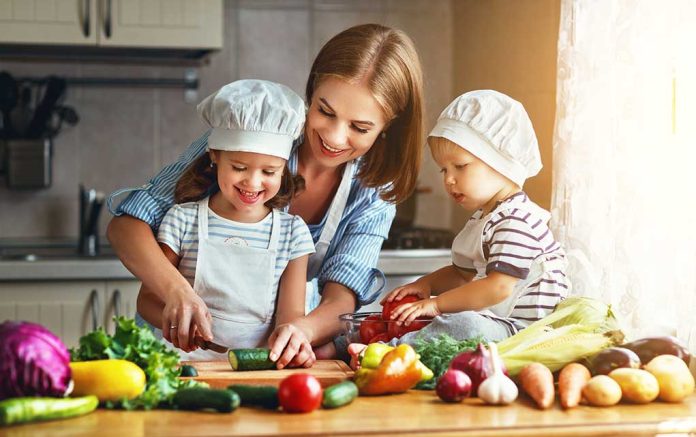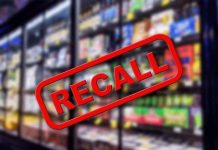
Spinach and strawberries top the 2025 “Dirty Dozen” list with over 90% of samples testing positive for potentially harmful pesticide residues that can’t be fully washed off and have been linked to cancer, developmental delays, and reproductive harm.
Key Takeaways
- The Environmental Working Group’s 2025 “Dirty Dozen” list reveals 12 fruits and vegetables with the highest pesticide contamination, led by strawberries and spinach.
- Blackberries and potatoes are new additions to the list, with potatoes containing chlorpropham, a chemical banned in the European Union.
- Pesticide residues remain even after washing and peeling, presenting particular risks to children and developing fetuses.
- The “Clean Fifteen” list offers alternatives with minimal pesticide contamination, including avocados, sweet corn, and pineapples.
- Switching to organic produce can significantly reduce pesticide levels in the body, as confirmed by multiple peer-reviewed studies.
The 2025 Dirty Dozen Unveiled
The Environmental Working Group has released its 2025 “Dirty Dozen” list, identifying fruits and vegetables with the highest pesticide contamination levels. This year’s list features strawberries, spinach, kale, collard and mustard greens, grapes, peaches, pears, nectarines, apples, bell and hot peppers, cherries, blueberries, and green beans. Testing revealed that over 90% of samples from these produce items contained potentially harmful pesticide residues, with multiple items showing more than 50 different pesticides when analyzed for detection frequency, concentration, and toxicity.
Particularly concerning are the new additions to the list. Blackberries join the ranks of contaminated berries, while potatoes have emerged as a significant concern due to high levels of chlorpropham, a chemical banned in the European Union but still used in the United States. This chemical is particularly troublesome because of when it’s applied to potatoes. “It’s applied after harvest to essentially prevent potatoes from sprouting while they’re in storage or in transit,” said Alexis Temkin from the Environmental Working Group. “Because it’s applied so late after harvest and so close to when consumers might be exposed or eating potatoes, that’s partially what leads to some of these really high concentrations.”
Health Risks and Consumer Guidance
The potential health consequences of pesticide exposure should not be underestimated, especially for vulnerable populations. Studies have linked pesticides to premature births, congenital malformations, genetic damage, reduced sperm concentrations, heart disease, and various forms of cancer. Children are particularly at risk due to their developing bodies and smaller size, with exposure potentially beginning in the womb. Research has shown significant DNA damage and poorer neurodevelopment in children exposed to higher levels of pesticides.
“EWG’s Shopper’s Guide is a tool to inform consumers and help them with their produce shopping choices, with the goal of everyone eating more fruits and vegetables,” said Alexis Temkin, from the Environmental Working Group. “The guide is there to help consumers eat a lot of fruits and vegetables while trying to reduce pesticide exposure. One of the things that a lot of peer-reviewed studies have shown over and over again (is) that when people switch to an organic diet from a conventional diet, you can really see measurable levels in the reduction of pesticide levels in the urine.”
A concerning aspect of the findings is that these pesticide residues remain even after washing and peeling. The USDA’s testing mimics consumer behavior by washing and peeling produce before testing, yet significant residues were still detected. This suggests that conventional cleaning methods cannot completely eliminate pesticide exposure, reinforcing the value of being selective about which produce items to buy organic and which conventional options present lower risks.
The Clean Fifteen and Practical Solutions
For budget-conscious consumers, the EWG also provides the “Clean Fifteen” list, featuring produce with minimal pesticide contamination. This year’s list includes pineapple, sweet corn, avocados, papaya, onions, frozen sweet peas, asparagus, honeydew melon, kiwi, cabbage, mushrooms, mangoes, watermelon, sweet potatoes, and carrots. These items offer safer conventional options for shoppers who cannot afford to buy everything organic.
“We strongly support consumer choice when shopping for fruits and vegetables. But this choice should not be influenced by this list,” Teresa Thorne, the Alliance for Food and Farming’s executive director, said in an email. “Instead consumers should be reassured by decades of toxicology studies, government data and nutrition research which underscores the importance of a diet rich in fruits and vegetables on health and the safety of both organic and conventionally grown produce.”
Despite the Alliance’s criticism, the scientific evidence of pesticide risks remains compelling. Health experts recommend several practical solutions to minimize exposure: rinse all produce thoroughly under warm water, even items you plan to peel; use a vegetable brush for firm produce; consider an apple cider vinegar solution for additional residue removal; and prioritize organic versions of the “Dirty Dozen” items when possible, while feeling more confident choosing conventional options from the “Clean Fifteen” list.
Balancing Health Priorities
The EWG emphasizes that their guidance is not meant to discourage fruit and vegetable consumption but rather to inform smarter choices. The overwhelming scientific consensus confirms that diets rich in fruits and vegetables provide essential nutrients that protect against numerous health conditions. The goal is to maximize these benefits while minimizing unnecessary chemical exposure, particularly for children, pregnant women, and those with compromised immune systems.
For American families already struggling with rising food costs under the Biden administration, these findings present yet another challenge. The added expense of organic produce places an additional burden on households already stretched thin by inflation. This reality makes the balanced approach offered by the EWG particularly valuable—knowing which items are most important to buy organic allows consumers to allocate their food dollars more effectively while still protecting their families’ health.





